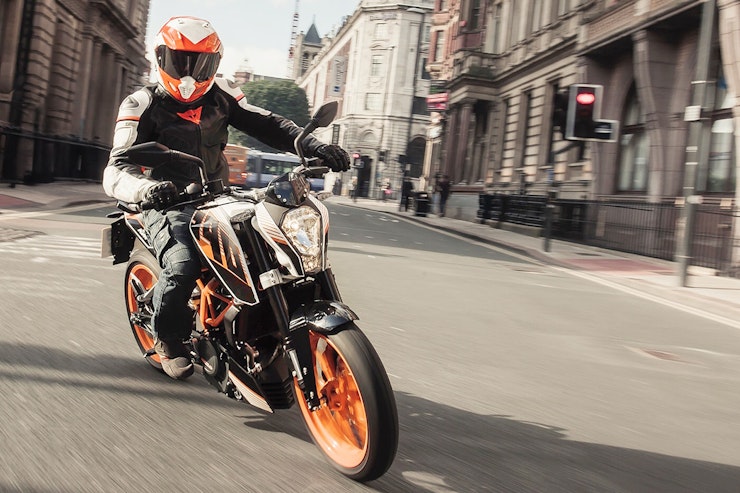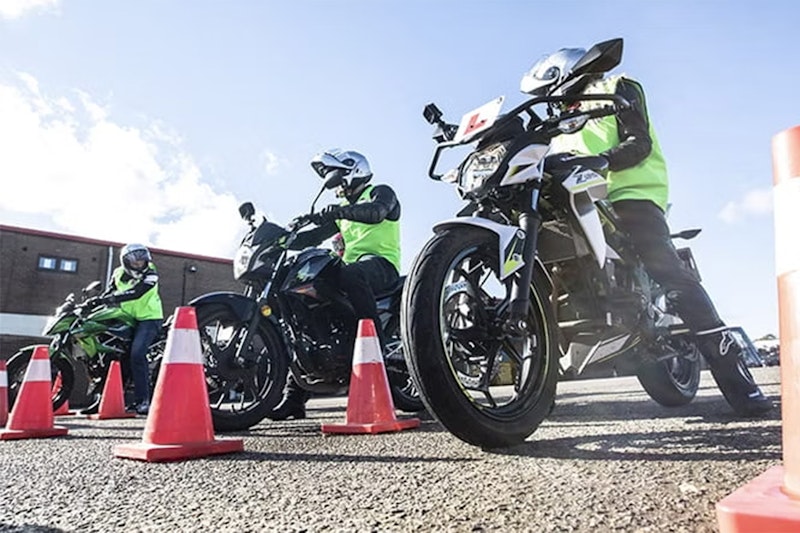New rider guide | Motorcycle kit, security & riding advice
By John Milbank
Consumer Editor of Bennetts BikeSocial
28.05.2025
Welcome to motorcycling! Whether you’re starting out on a 125cc scooter or you’re on a bigger machine, BikeSocial is your free, independent resource for advice, reviews and things to do.
We’re here to help you get more from motorcycling, so use the links below to find out everything you need to know. And if you have any more questions, join us and industry experts at our exclusive motorcycle forum; BikeClub, or come and say hi at our friendly Facebook group.
UK Motorcycle licence laws
At 16 you can get a provisional licence and do your Compulsory Basic Training (CBT), then ride a 50cc moped restricted to 28mph on L-plates.
If you’re 17 and have a CBT you can ride a 125cc (still on L-plates) that makes up to 15bhp / 11kW of power. If you take your CBT, theory and practical tests at this age you can get an A1 licence and lose the L-plates.
At 19, if you’ve had an A1 licence for two years you can take one more practical test then get an A2 licence. Or you can take the ‘direct access’ route and do a CBT, theory and practical test to get the same licence. Either way you’ll then be able to ride a bike that makes up to 46.6bhp / 35kW of power
If you want to ride a full-power motorcycle you need an A licence. You can get this by holding an A2 licence for at least two years then doing another practical test (so the youngest you could be is 21), or if you’re 24 or over and haven’t got any other licences you can do the CBT, theory and practical tests to go direct to that full A licence.
You can find out more about the UK motorcycle, scooter and moped licence laws here.
UK licence laws explained
Your quick and easy guide to getting on a bike
Choosing the best motorcycle
Asking which is the best motorcycle is the impossible question as bikes are an incredibly personal choice. If you’re not sure what you want to buy as your first motorbike, the best advice is to go to some dealers and have a look around the showroom to see what styles you like – street bikes, sportsbikes, adventure, touring, commuter… there are loads to choose from – then check out the hundreds of motorcycle reviews on the BikeSocial website, and the thousands of hours of video on the Bennetts BikeSocial YouTube channel.
If you’re looking for accessories for your new motorcycle, check out the exclusive motorcycle discounts and competitions here.
Be the best rider you can
There are loads of further training options available, but as a starter we really recommend BikeSafe, which is run by local police forces. Don’t worry – they won’t be trying to catch you out – it’s a really enjoyable way to think about how you ride. It can often make you faster at the same time being safer!
For instant motorcycle riding advice, check out the biking tips on BikeSocial here, and our better riding videos on YouTube here.
Choosing your first bike kit
What to look for with any budget
Choose the best riding kit
By law, you must wear a helmet in the UK, but despite everything else being optional you really should wear proper motorcycle gloves, boots, jacket and trousers. Don’t worry though, it doesn’t have to look like motorcycle kit if you don’t want it to, and it doesn’t have to be expensive. In fact, a lot of bike gear now looks just like fashion kit, so you can stay protected in kit you can also wear day-to-day.
BikeSocial has a massive library of motorcycle riding kit reviews here, or check out these constantly updated guides:
Basic motorcycle maintenance
You’ve got your bike, but it’s important to understand how to look after it. We’re not talking about oil and filters changes (though if you want to, you can find out how to service your motorcycle here) but these are the basic essentials…
Check the tyres: It’s no good pressing on them to see if they’re inflated! Check your tyre pressures regularly, but do it before you go for a ride because they must be at ambient temperature when you check them. If they’re damaged in any way, or cracked, get them checked! For a complete motorcycle tyres FAQ, click here.
Lube the chain: If your bike has a chain it’s important that you keep it lubed. It’s best to do it on a clean chain, and don’t do it just before a ride or it’ll all fling off. Find the best motorcycle chain lube here.
Adjust the chain: You’ll need to check your bike’s instructions for this, but it’s really important that you don’t let the chain get slack (though don’t make it too tight either!). Check out our guide to adjusting your motorcycle chain here.
Keep an eye on your brakes: It’s fairly easy to see if there’s plenty of meat left on your bike’s brake pads, and if they start squealing get a mechanic to look at them immediately! You can get more advice on motorcycle brake pads here.
Store it well: Keeping your bike in a garage or locked shed is the best bet, but if you have to keep it outside, use a bike cover as it’ll protect it from the weather and it’ll keep it out-of-sight of thieves. Make sure you lock it too! For motorcycle security advice, click here.
Keep it clean: Look under a car and it’ll likely be dirty and rusty, but on a bike the chassis is always on display. Keep it clean using our guide to the best motorcycle cleaners here (it’s easy and cheap), and treat it with a rust proofer from our guide to the best corrosion protectants here.
Keep the battery charged: If your bike doesn’t get used much you might need to connect it to a maintenance charger. Make sure you don’t just get a trickle charger, and if it’s a lithium battery you MUST use a charger designed for them. Check out our motorcycle battery FAQ here.
Enjoy your motorcycle life
If you’re looking for somewhere to go on your bike, check out our huge motorcycle events guide here. We also have a guide to Britain’s best roads here, and a guide to riding a motorcycle in Europe here. You can also find loads of exclusive events and more at BikeSocial membership here.
Finally, why not read our FREE magazine – BikeTalk – here.

